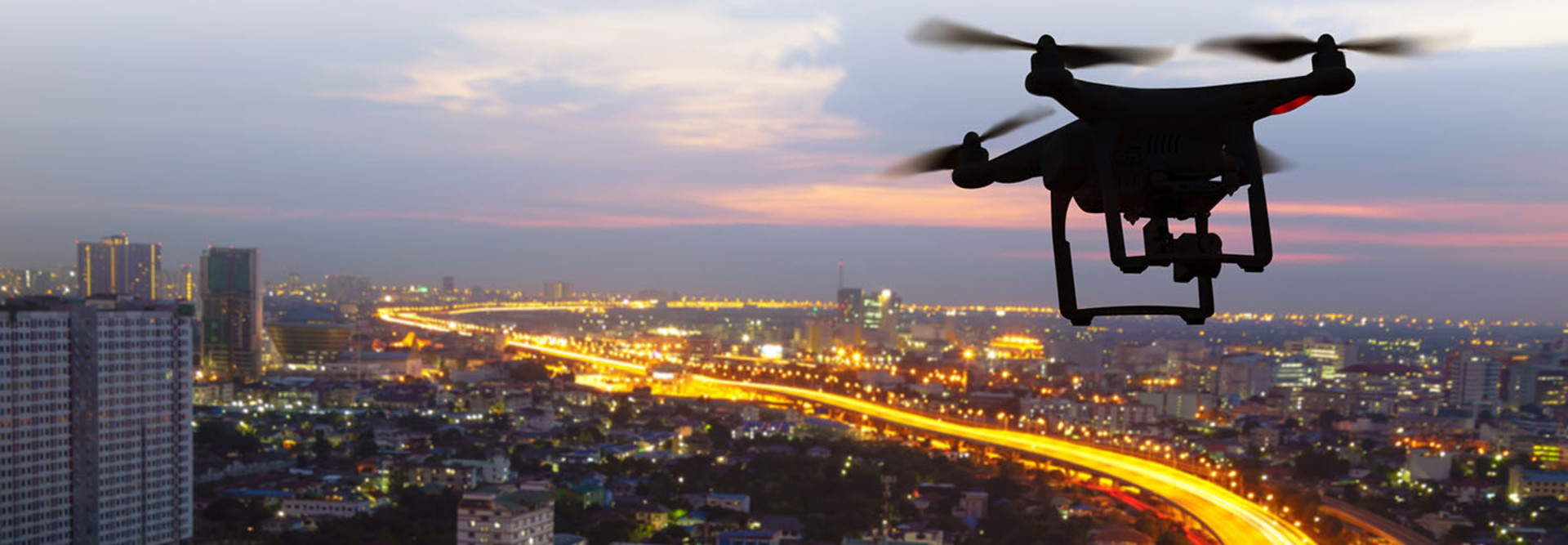Drones Provide Air Support in Healthcare Emergencies
In February 2013, an EF4 tornado tore through Hattiesburg, Miss., and the surrounding area, an event that caused an estimated $38 million in damage across two counties.
In its aftermath, Dr. Italo Subbarao, an associate dean and associate professor at William Carey University’s College of Osteopathic Medicine, and Dr. Guy Paul Cooper Jr., then a third-year medical student, studied the interactions between area residents and first responders on Twitter, noticing that the latter had trouble reaching people in need.
After publishing their research on using Twitter for community engagement in a disaster, Subbarao and Cooper thought about the next step.
“What if we could take drone-based technology and put an advanced telemedicine kit on it?” says Subbarao, who has experience in emergency medicine and special training in disaster and humanitarian medicine. “What if it was sophisticated enough to provide critical, lifesaving medications and interventions before first responders can arrive?”
In October 2015, Subbarao and Cooper unveiled Healthcare Integrated Rescue Operations (HiRO), which offers kits for critical care and mass casualty response delivered by drones with a range of more than 40 miles. Along with standard medications and medical equipment, the kit includes a pair of smart glasses that integrate with an augmented reality headset. That allows physicians to see the same thing as a bystander delivering care at the scene, Subbarao says.
“We have designed this with the idea to empower the individual in the event,” he says.
Drones Deliver Life-Saving Medical Equipment
A partnership announced in October 2017 between drone delivery service Flirtey and the Regional Emergency Medical Services Authority (REMSA), a nonprofit emergency medical service provider in northwest Nevada, also intends to use drones to deliver medical equipment before first responders can arrive. REMSA’s focus, is on delivering automated external defibrillators (AEDs) to treat individuals who may be experiencing a cardiac event.
The drone would target suburban areas of Washoe County where there may not be a fire station or EMS dispatch nearby. “[The AED’s] effectiveness is in the first couple minutes,” says J.W. Hodge, REMSA’s COO. “We’re trying to take that public service and make it mobile. We’re hoping to get AED there within three minutes, when the ambulance will be there two or three minutes later.”
Drone Backups Foster Mobile and Portable Physicians
One challenge is the set of Federal Aviation Administration (FAA) regulations surrounding drone use. For example, waivers are required to fly higher than 400 feet or between sundown and sunup — both of which limit the use case for drones in healthcare.
Flirtey has applied for fast-track approval from the FAA. With approval in place, REMSA and Flirtey hope to launch their AED delivery program in 2018.
Another challenge is making drones part of the emergency response workflow. The International Academies of Emergency Dispatch has strict guidelines for how dispatchers communicate with bystanders before an ambulance arrives. REMSA is working with the academy to incorporate drone delivery, Hodge says — including how to approach the drone when it lands, to how to unpack it and how to open the AED.
Despite these challenges, Subbarao believes drones can empower physicians to be “mobile and portable,” providing the “ultimate backup” in evacuation scenarios ranging from natural disasters to active shooter scenarios.









